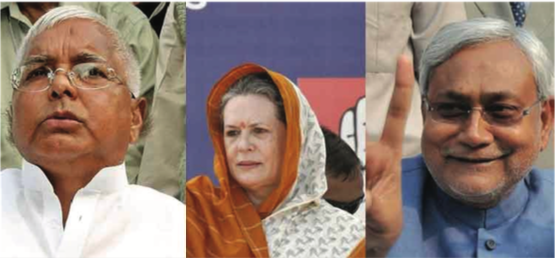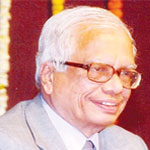It can be said that the United Front (UF) strategy originated in the states after the Congress lost working majority in many states after the 1967 elections. A report of the Ministry of Home Affairs on the Political Defections in 1968, spoke of ‘Aaya Rams’ and ‘Gaya Rams’ who formed UF governments in some of the states where the Congressmen defected to opposition-led UF governments or UF governments were formed by the Congress by inviting opposition leaders to join and support them!
In a parliamentary system, the government can deliver good governance if the government is led by a single political party. Next best is, whenever no party has a working majority, a coalition government of a few like-minded political parties, with one dominant party providing requisite leadership. But the UF was not a coalition, as it was neither a group of likeminded parties, nor led by a dominant party. It has been always led by a minority party or parties, with external support of the Congress. The Congress Party has used the UF as a strategy to encourage its detractors to form the government, knowing fully well that the political climate is not in its favour to form the government by itself, and permit its opponents to form the government with its support. However, it has withdrawn its support on flimsy reasons when its supreme leader considered time is ripe to hold fresh elections to come back to power!
Strategy in practice
The first ever experiment of UF government at the national level, was that of Charan Singh breaking from the Janata government — the first-ever non-Congress government at the national level, led by the then Prime Minister (PM), Morarji Desai — with his 76 supporters, to form a government with the external support from the discredited and defeated Congress Party in the post-Emergency period in 1979. Charan Singh was only interested in dislodging Desai and becoming the PM with the Congress support — to go down in the history books as a PM of India. He had to resign without even facing the Lok Sabha. Since then this has been the Congress strategy to extend unconditional support to any non-Congress-led UF or its variants like National Front (NF) or Federal Front (FF) governments, and withdraw support whenever the party thinks time is ripe for an election for it to come back into power.
The next opportunity for the Congress to promote and kill the NF experiment came when Rajiv Gandhi was at the helm of the party in 1989-1991. How a leader installed by popular support can be thrown out with equal ease was provided in this phase. Post-Mrs.Gandhi assassination in 1984, the Congress won under Rajiv, 414 seats, which even Jawaharlal Nehru could not win during his prime days. But in 1989, the Congress under Rajiv won only 193 seats, without a working majority. Since popular mood was one of anti-Congress, his friend turned political foe V. P. Singh’s Janata Dal (JD) with 143 members, formed a minority NF government, with the BJP support on the right and Marxists on the left! The government fell because of the ambition of socialistic Chandra Shekhar to become the PM! Rajiv was generous in extending support to Chandra Shekhar, only to withdraw , triggering the general election in 1991.
On the other hand, Narasimha Rao was able to run a Congress government – where he was able to turn a minority government to a majority government, by ‘purchasing’ MPs through monetary inducements and promotion of splits and mergers. But post-Rao era again saw frequent elections, UF formations, and musical chair sessions to occupy the PM’s chair between Deve Gowda and I.K. Gujral! These two accidental PMs were also shown the door within a period of about ten months rule by each, by the manipulative actions of the Congress Party from outside. It is the failure of all UF governments in the 1990s based on anti-Congress-ism initially and anti-BJP-ism later that led the BJP under Atal Behari Vajpayee to experiment with a genuine coalition government when the National Democratic Alliance (NDA) was formed in 1998, wherein the BJP was the largest lead party, with others providing support in small numbers. That was also repeated by the Congress when it formed United Progressive Alliance with itself as the lead party, and was able to remain in power for ten years (2004 to 2014).
Re-emergence of UF
In the beginning, anti-Congress-ism was slow to emerge. But in the late 1990s, the Congress was in the lead in promoting anti-BJP-ism instead of accepting the need for an alternative party to rule in a democracy. However, NDA’s getting into power under Narendra Modi in 2014 has accelerated the process of creating a UF against the BJP for 2019.
The immediate causes for the same can be identified. First, the BJP under Modi had to face a few defeats despite Modi leaving no stone unturned to win in Bihar in 2015, with a short divorce between BJP and JD (U). He had to face the opposition led ‘gatbandhan’ (a new name in Hindi heartland) for the UF! Gatbandhan won hands-down. Second, there were similar losses inflicted on the Modi-led BJP in three Lok Sabha constituencies – Gorakhpur and Phulpur in the UP, and it could not wrest Araria Lok Sabha seat from the RJD despite the renewal of the BJP-JDU alliance. This has strengthened the NDA’s vulnerability in the opponents’ calculations.
Third, the BJP top leader- ship led by PM and Party President Amit Shah suffered a stunning defeat in the Karnataka state elections in May 2018; a defeat magnified in my opinion because the leadership made haste to get into power, despite the lack of a clear majority. While the Governor was constitutionally right in giving the opportunity to the BJP as the largest single party, asking it to demonstrate its majority in 15 days was seen as a magnanimous gesture. But the Supreme Court stepped in as the ultimate decider of who is the winner in a court drama initiated by the Congress. Is it right, in a democracy?
Be that as it may, the success of the Congress, as the second largest party to join hands with JD (S) as a junior partner, in post-election period is not a legitimate alliance in democratic practice, as their campaign in Karnataka, was far more vicious against each other, than against the BJP. Chief Minister Kumaraswamy has called it a coalition. In coalition he may have tensions, but not tears! It is a state level revival of the last century’s discredited UF, in pursuit of anti-BJP-ism, which might not last beyond a few months!
Conclusion
After the government formation in the state, all hitherto rivals and bitter critics of each other, like the SP and the BSP in the UP, or the CPI (M) and TMC in the West Bengal and other CMS and leaders critical of the BJP were present at the Kumaraswamy swearing-in. Since then, almost everyone who was there, has spoken of repeating the Karnataka model of UF at the national level, to keep the BJP out of power next year.
But will they be able to do so? I do not think so; they have shown their inability to get elected opposition candidate recently as the Deputy Chairman of the Rajya Sabha. If the motley group under Congress leadership can’t secure enough support to get its candidate B.K. Hariprasad as the Deputy Chairman, will they be able to get the leader of the coalition elected in 2019? That is their main problem. All those who spoke of a revival of the discredited UF, are not clear: Who will be the leader to face Narendra Modi? A reluctant leader of the party — Rahul Gandhi has offered himself as the leader, if the Congress emerges as the largest party.
The idea is coined purely on negative unity of aiming to keep the BJP out, without seriously understanding internal contradictions. Thus, Mayavati said that her party will enter into alliance only if it was given a respectable number of seats; other- wise it will go alone! But others had different ideas: Bihar’s leader, Tejashwi Yadav said Congress Party had PM’s post for many years; now they should offer it to others!
Then, women’s right advocates put forward names of Mamata and Mayavati! Then the Congress Party came with numerical solution; the leader of the party getting largest number of seats in the Lok Sabha in 2019 General Elections will win the lottery. Will it be a repeat of 1996 when Deve Gowda with 17 MPs – then largest, became the PM? Now parties and factions forming the UF is larger than in 1997; it is likely to be an annual musical chair for selecting the PM! Does the nation want to live through such a scenario, once again?


 [/column]
[/column]